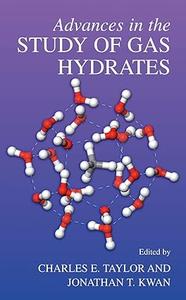Forum Legend
Member
LEVEL 1
45 XP

Free Download Charles E. Taylor, Jonathan T. Kwan, "Advances in the Study of Gas Hydrates"
English | 2004 | pages: 251 | ISBN: 1441934510, 0306484811 | PDF | 16,1 mb
This book had its genesis in a symposium on gas hydrates presented at the 2003 Spring National Meeting of the American Institute of Chemical Engineers. The symposium consisted of twenty papers presented in four sessions over two days. Additional guest authors were invited to provide continuity and cover topics not addressed during the symposium. Gas hydrates are a unique class of chemical compounds where molecules of one compound (the guest material) are enclosed, without bonding chemically, within an open solid lattice composed of another compound (the host material). These types of configurations are known as clathrates. The guest molecules, u- ally gases, are of an appropriate size such that they fit within the cage formed by the host material. Commonexamples of gas hydrates are carbon dioxide/water and methane/water clathrates. At standard pressure and temperature, methane hydrate contains by volume 180 times as much methane as hydrate. The United States Geological Survey (USGS) has estimated that there is more organic carbon c- tained as methane hydrate than all other forms of fossil fuels combined. In fact, methane hydrates could provide a clean source of energy for several centuries. Clathrate compounds were first discovered in the early 1800s when Humphrey Davy and Michael Faraday were experimenting with chlorine-water mixtures.
Buy Premium From My Links To Get Resumable Support,Max Speed & Support Me
FileFox
9j52y.rar
Rapidgator
9j52y.rar.html
Uploadgig
9j52y.rar
Links are Interchangeable - Single Extraction
DownGX's SIGNATURE
